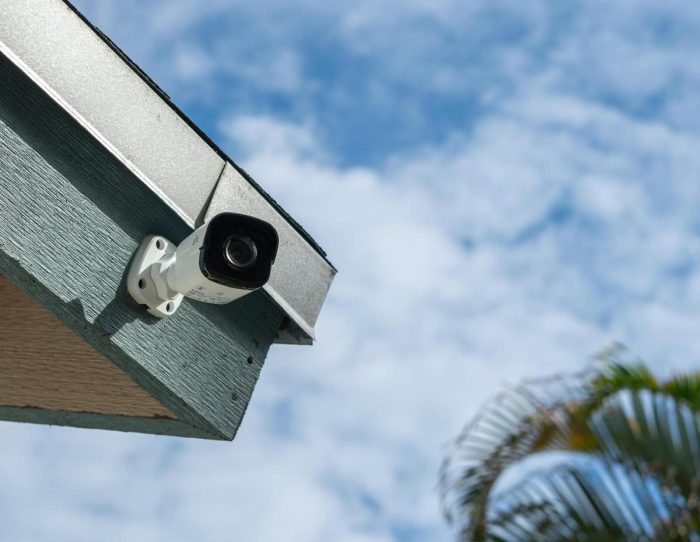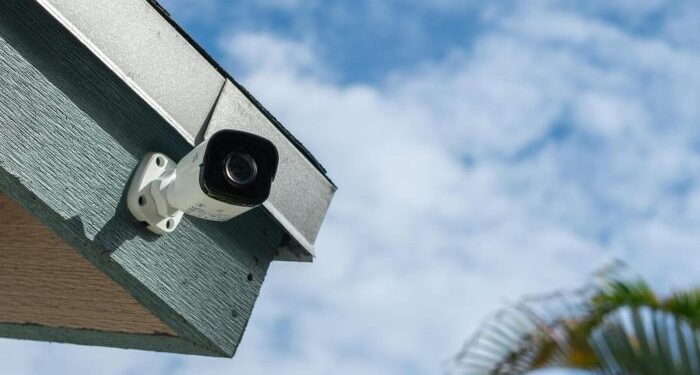Security camera installation near me sets the stage for this enthralling narrative, offering readers a glimpse into a story that is rich in detail and brimming with originality from the outset. The topic covers essential factors to consider, types of security cameras, the installation process, and the debate between DIY and professional installation.
With a focus on ensuring maximum security and peace of mind, this guide aims to equip readers with the knowledge needed to make informed decisions regarding their security camera needs.
Factors to Consider for Security Camera Installation
When planning to install security cameras, there are several important factors to consider to ensure optimal effectiveness and coverage.
Location Selection
Choosing the right location for camera installation is crucial for maximizing surveillance coverage. Consider areas with high foot traffic, points of entry, and vulnerable spots that require monitoring.
Lighting Conditions
Lighting plays a significant role in the effectiveness of security cameras. Ensure that the chosen location has adequate lighting for clear visibility, especially during nighttime. Consider installing additional lighting if needed to enhance camera performance.
Weatherproof Cameras
For outdoor installations, it is essential to use weatherproof cameras that can withstand various weather conditions. Rain, snow, and extreme temperatures can impact camera functionality, so invest in durable cameras designed for outdoor use.
Types of Security Cameras
When it comes to choosing the right security camera for your surveillance needs, it's essential to understand the different types available in the market. Each type offers unique features and benefits that cater to specific security requirements.
Wired vs. Wireless Security Cameras
- Wired Security Cameras:
- Require a physical connection to a power source and recording device.
- Tend to be more reliable and stable in terms of connectivity.
- May be more challenging to install due to wiring requirements.
- Wireless Security Cameras:
- Operate using Wi-Fi or cellular network connections.
- Offer flexibility in terms of installation locations without the need for wiring.
- May experience connectivity issues or interference depending on signal strength.
PTZ (Pan-Tilt-Zoom) Cameras
PTZ cameras provide enhanced surveillance capabilities with their ability to pan, tilt, and zoom to specific areas of interest. These cameras offer the following benefits:
- 360-degree coverage for comprehensive monitoring.
- Remote control functionality for adjusting the camera's position and zoom level.
- Zoom capabilities for capturing detailed images of distant objects or individuals.
Infrared (IR) Cameras for Night Vision
Infrared cameras utilize infrared technology to capture clear images in low-light or completely dark environments. Key features of IR cameras include:
- Automatic activation of infrared LEDs in low-light conditions.
- Ability to capture high-quality black and white images in the dark.
- Enhanced visibility for surveillance in areas with limited lighting.
Installation Process

When it comes to installing a security camera system, it is crucial to follow a step-by-step guide to ensure proper functionality and coverage. Proper camera placement, angles, and remote viewing setup are essential aspects of the installation process. Additionally, concealing wires is important for a clean and professional look.
Camera Placement and Angles
- Choose strategic locations: Place cameras at entry points, near valuables, and in areas with high traffic.
- Consider angles: Position cameras at a downward angle for optimal coverage and avoid placing them directly facing light sources.
- Test angles: Before securing the cameras, test different angles to ensure they cover the desired areas effectively.
Remote Viewing Setup
- Install viewing software: Download and install the necessary software on your computer or mobile device.
- Connect to the system: Follow the instructions to connect your cameras to the viewing software for remote access.
- Set up alerts: Configure alerts to notify you of any suspicious activity detected by the cameras.
Concealing Wires
- Use cable clips: Secure wires along walls or ceilings using cable clips to keep them out of sight.
- Hide wires behind walls: Consider running wires behind walls or using cable covers to conceal them effectively.
- Professional installation: If unsure, seek professional help to hide wires for a seamless and neat finish.
DIY vs. Professional Installation
When it comes to security camera installation, there are two main options to consider: Do It Yourself (DIY) or hiring a professional. Each option has its own set of advantages and disadvantages, so it's important to weigh them carefully before making a decision.
Advantages and Disadvantages of DIY Installation
DIY installation can be a cost-effective option for those who are handy and have some technical skills. It allows you to have full control over the installation process and saves you money on labor costs. Additionally, you can customize the setup according to your specific needs.
- Advantages of DIY Installation:
- Cost-effective
- Control over installation process
- Customization options
- Disadvantages of DIY Installation:
- Requires technical skills
- Time-consuming
- No professional support
Benefits of Hiring a Professional
On the other hand, hiring a professional for security camera installation can offer several benefits. Professionals have the expertise and experience to ensure that the cameras are installed correctly and functioning optimally. They can also provide valuable advice on the best placement for maximum security coverage.
- Benefits of Hiring a Professional:
- Expertise and experience
- Optimal installation
- Professional advice
Risks and Challenges of DIY Setups
While DIY installation may seem appealing, there are also risks and challenges associated with this approach. Without the proper knowledge and skills, you may end up with a subpar installation that compromises the security of your property. Additionally, troubleshooting technical issues on your own can be frustrating and time-consuming.
- Risks and Challenges of DIY Setups:
- Potential security vulnerabilities
- Technical difficulties
- Lack of professional support
Tips for Choosing the Right Professional Installation Service
When selecting a professional installation service for your security cameras, it's essential to do your research and choose a reputable and reliable provider. Consider factors such as experience, customer reviews, pricing, and warranty options. Request a consultation to discuss your specific needs and ensure that the service provider can meet your requirements.
Ultimate Conclusion
In conclusion, navigating the realm of security camera installation near me requires careful consideration of various factors. By understanding the nuances of camera types, installation processes, and the pros and cons of DIY versus professional installation, individuals can make well-informed choices to safeguard their properties effectively.
Stay informed, stay secure.
Quick FAQs
What are the essential factors to consider before installing security cameras?
Factors to consider include location, lighting conditions, camera type, and whether the cameras are weatherproof for outdoor use.
What are the benefits of PTZ cameras for surveillance?
PTZ cameras offer the ability to pan, tilt, and zoom, providing enhanced flexibility and coverage for surveillance purposes.
What is the difference between wired and wireless security cameras?
Wired cameras require physical cabling for power and data transmission, while wireless cameras rely on Wi-Fi connections for operation.
Why is camera placement important for maximum coverage?
Strategic camera placement ensures that all critical areas are covered, minimizing blind spots and enhancing overall surveillance effectiveness.
What are the risks associated with DIY security camera installation?
Risks include improper setup leading to vulnerabilities, potential voiding of warranties, and suboptimal system performance.














